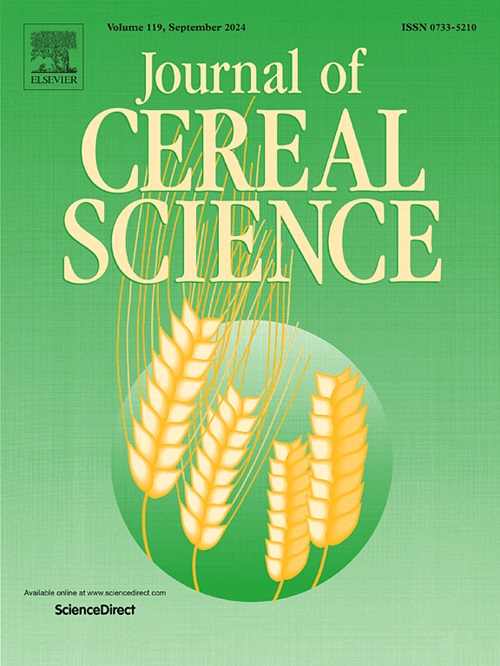Thermodynamic drivers of rice glutenin Assembly: Multiscale analysis of Hierarchical structure and intermolecular bonding
IF 3.7
2区 农林科学
Q2 FOOD SCIENCE & TECHNOLOGY
引用次数: 0
Abstract
To investigate the effect of temperature on rice glutenin (RG), four rice varieties (WYD 4, SJ 20, LD 28, and JND 738) were selected and subjected to heat treatment at temperatures ranging from 50 °C to 90 °C. Following heat treatment, RG exhibited a rough, spongy network structure, with high storage modulus (G′) and loss modulus (G") values, indicating gel-like properties. Both G′ and G" decreased after heating. However, tan δ decreased while elasticity increased upon heating, with the opposite effects observed after cooling. As the temperature increased, the average particle size of the four types of RG expanded, suggesting aggregation. Fourier transform infrared (FTIR) spectroscopy confirmed that an ordered structure predominated within the secondary structure of RG. Heat treatment initially increased and then decreased the fluorescence intensity and surface hydrophobicity. With rising temperatures, free sulfhydryl groups were converted into disulfide bonds, reaching the highest concentration at 80 °C (335.87 μmol/g、256.72 μmol/g、277.27 μmol/g、338.14 μmol/g). These findings indicate significant alterations in the conformation and interactions among RG aggregates between 70 °C and 80 °C, which suggests that this range is the key transition temperature for the functional properties of RG. These finding contribute to optimizing temperature control in grain processing, offering a theoretical foundation for improving grain-based product design. These results are significant for enhancing the quality of RG-related products and guiding the development of novel formulations.

水稻谷蛋白组装的热力学驱动:层次结构和分子间键合的多尺度分析
为了研究温度对水稻谷蛋白(RG)的影响,选择4个水稻品种(WYD 4、SJ 20、LD 28和JND 738),在50 ~ 90℃的温度范围内进行热处理。经过热处理后,RG呈现出粗糙的海绵状网状结构,具有较高的存储模量(G’)和损耗模量(G”)值,显示出凝胶状性质。加热后G′和G”均减小。然而,加热后tan δ降低,弹性增加,冷却后则相反。随着温度的升高,四种RG的平均粒径均增大,呈聚集态。傅里叶红外光谱(FTIR)证实了RG的二级结构以有序结构为主。热处理后荧光强度和表面疏水性先升高后降低。随着温度的升高,游离巯基转化为二硫键,在80℃时达到最高浓度(335.87 μmol/g、256.72 μmol/g、277.27 μmol/g、338.14 μmol/g)。这些发现表明,在70°C和80°C之间,RG聚集体的构象和相互作用发生了显著变化,这表明这一范围是RG功能性质的关键转变温度。这些发现有助于优化粮食加工中的温度控制,为改进以粮食为基础的产品设计提供理论依据。这些结果对于提高rg相关产品的质量和指导新配方的开发具有重要意义。
本文章由计算机程序翻译,如有差异,请以英文原文为准。
求助全文
约1分钟内获得全文
求助全文
来源期刊

Journal of Cereal Science
工程技术-食品科技
CiteScore
7.80
自引率
2.60%
发文量
163
审稿时长
38 days
期刊介绍:
The Journal of Cereal Science was established in 1983 to provide an International forum for the publication of original research papers of high standing covering all aspects of cereal science related to the functional and nutritional quality of cereal grains (true cereals - members of the Poaceae family and starchy pseudocereals - members of the Amaranthaceae, Chenopodiaceae and Polygonaceae families) and their products, in relation to the cereals used. The journal also publishes concise and critical review articles appraising the status and future directions of specific areas of cereal science and short communications that present news of important advances in research. The journal aims at topicality and at providing comprehensive coverage of progress in the field.
 求助内容:
求助内容: 应助结果提醒方式:
应助结果提醒方式:


